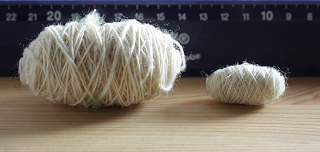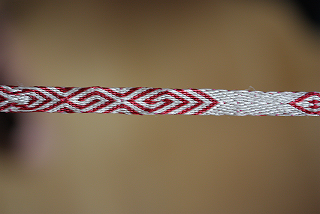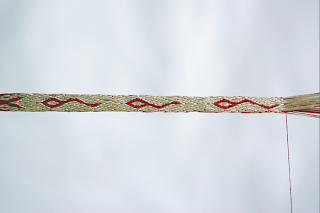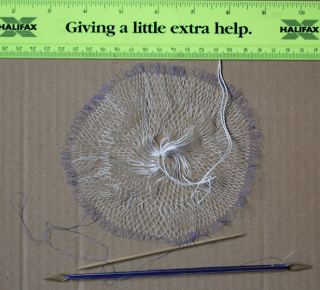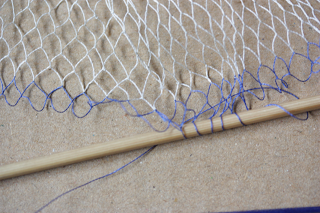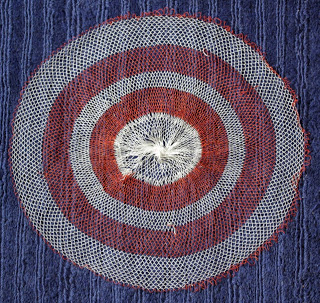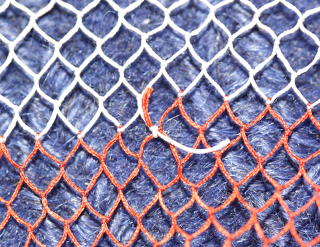And this week has definitely seen good progress textiles-wise - yesterday evening was spent working on the new blue hairnet. I'm adding in two rows with double-length mesh and putting those to good use by beading them. Which means every second mesh gets a bead pulled over it before I go on netting. Which is, how shall I put it... a tiny bit tedious. More whining and pictures due to follow in the course of the next few days.
I've also ended (won, I'd say) my struggle against the article. Now I hope that the outcome is ok - that's the downside of writing about something for the umpteenth time. Even if the topic of the article is just a spin-off of The Topic, there's enough crossover left. And after some time, it really is hard to keep what you're writing in perspective; the fact that you have already explained it in depth and on paper somewhere else, after all, does not mean that the readers of Shiny New Article all have read and memorised it. So I hope that I managed to put all the important bits in. I'll be so happy once The Topic is finally off in print, and therefore, finished for a while... not that I don't love thinking and talking and experimenting about garments, but after more than four years of intensive work on that, I feel like wanting a break to concentrate on something else for a while.
I've also ended (won, I'd say) my struggle against the article. Now I hope that the outcome is ok - that's the downside of writing about something for the umpteenth time. Even if the topic of the article is just a spin-off of The Topic, there's enough crossover left. And after some time, it really is hard to keep what you're writing in perspective; the fact that you have already explained it in depth and on paper somewhere else, after all, does not mean that the readers of Shiny New Article all have read and memorised it. So I hope that I managed to put all the important bits in. I'll be so happy once The Topic is finally off in print, and therefore, finished for a while... not that I don't love thinking and talking and experimenting about garments, but after more than four years of intensive work on that, I feel like wanting a break to concentrate on something else for a while.





